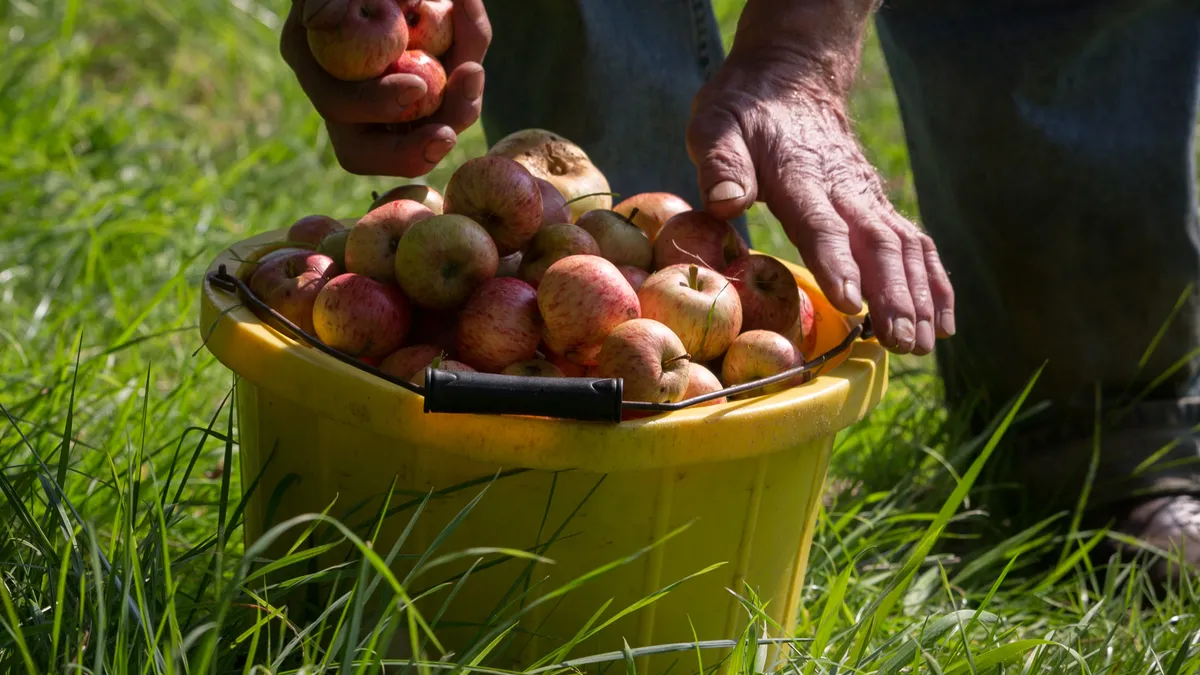Apple picking will start earlier than usual this year as warmer weather leads to a second consecutive year of above average harvests.
Higher temperatures in late winter and early spring caused buds to form, leading to an earlier bloom in May across many apple-growing regions. Growers avoided freezing temperatures following the early bloom, allowing an earlier harvest in the Midwest and New York state. Last year, some farms in New York saw crops devastated from an unusual frost in May.
At Prospect Hill Orchards in New York’s Hudson Valley, the Honeycrisps are peaking.
“It has been a great season all the way around,” said seventh-generation farmer Pam Torres, who runs Prospect Hill with her parents and brother. “This year’s apples are growing red and robust, unlike last year’s crop which grew saturated by a very rainy fall season leaving many split as they struggled to absorb the deluge.”
States in the Midwest have also reported earlier harvests and above average crops. Michigan expects to produce 30.5 million bushels this year, which is above the average of 25.9 million, according to the Michigan Apple Committee.
The state saw a warm spring with higher-than-average temperatures that led to early budding and an earlier bloom in May. After the bloom, no significant frost came through the state, which led to a robust crop that was ready for harvest 10 days earlier than usual.
“This is the third year in a row with pretty good crops in Michigan. Usually you don’t have that many good years in a row,” said Alvin Blok, owner and farm manager at Blok Orchard in Ada.
Despite the ideal growing conditions, overall apple production this year is expected to fall short of 2023’s record harvest. According to the U.S. Apple Association, production for the 2024-2025 crop year will be 259.5 million bushels, a 10.1% decrease over the previous year.
The fruitful — and early — harvest brings its own set of challenges and opportunities. Rocky Surace, account manager for Sun Orchard Fruit Company, a packer in Burt, New York, said Premier Honeycrisps, which ripen about a month before standard Honeycrisp, have come in strong.
“It’s a very finicky variety but we have taken advantage of an early market with those,” he said.
Torres of Prospect Hill Orchards, however, worries that the earlier start to the harvest may not align with consumer expectations, which could hurt demand.
"Everything has been running about 10 days to two weeks early, so we’re just jumping into apple season even though our retail customers may not be ready,” she said.
Climate change and other long-term challenges create unpredictability that could make growing apples unsuitable for places like New York. Although warm weather provided a boost this year, apples still need cooler temperatures to develop their texture and pigment.
While nights provided temperature relief for orchards this year, growers said sustained higher temperatures down the line could threaten the future of production in traditional growing areas.
“I think the Hudson Valley is no longer the right climate for it, which is hugely disappointing. It’s just too hot," Torres said. "Maybe that’s the canary in the coal mine of changes coming down the pike.”










